- Home
- H. P. Lovecraft
The New Annotated H. P. Lovecraft Page 7
The New Annotated H. P. Lovecraft Read online
Page 7
50. David E. Schultz, “Who Needs the ‘Cthulhu Mythos’?”
51. A “spectacular copy” of the book was offered for sale in 2013 for $15,000.
52. Quoted in Robert E. Weinberg’s The Weird Tales Story, 121.
53. Ibid., 120.
54. “H. P. Lovecraft, Outsider,” In Defense of Dagon.
55. “A Plea for Lovecraft.”
56. Lovecraft to J. Vernon Shea, December 9, 1931, Selected Letters, III, 441, quoted with apparent agreement by humorist and critic Will Cuppy in his review of The Outsider and Others. Cuppy (see note 60, below) did call Lovecraft a “modest genius,” however.
57. Publishers Weekly, February 24, 1940, 890–91.
58. Thomas Ollive Mabbott, review of The Outsider and Others.
59. Peter De Vries, review of Beyond the Wall of Sleep.
60. Will Cuppy, review of Beyond the Wall of Sleep.
61. Edmund Wilson, The New Yorker, November 24, 1945.
62. Edmund Wilson, “Oo, Those Awful Orcs.”
63. Wilson was not alone in deploring Lovecraft’s use of adjectives; similar views were expressed by Colin Wilson and L. Sprague de Camp.
64. In “Mr. Holmes, They Were the Footprints of a Gigantic Hound!,” he had similar faint praise for the Sherlock Holmes stories of Arthur Conan Doyle, preferring writers like Henry James. While Doyle’s stories were enjoyable, Wilson admitted, these were “literature on a humble but not ignoble level.” He added: “The writing, of course, is full of clichés, but these clichés are dealt out with a ring which gives them a kind of value, while the author makes speed and saves space so effectively that we are rarely in danger of getting bogged down in anything boring. . . . [O]ver the whole epic there hangs an air of irresponsible comedy, like that of some father’s rigmarole for his children. . . .”
The Baker Street Irregulars, the object of Wilson’s scorn, was founded in 1934 by bookman Christopher Morley as a literary society dedicated to the study of Sherlock Holmes. Not surprisingly, there is a fair amount of crossover between fans of Lovecraft and the Holmes fans. In fact, August Derleth was a lifelong Sherlockian, though he did not become a member of the Baker Street Irregulars until 1971, the year of his death. Beginning in 1929—at the age of twenty—he wrote a long series of highly regarded stories about a Holmes-like detective, Solar Pons. (Lovecraft himself appears as a character in the Pons case “The Adventure of the Six Silver Spiders.”) These were first published in the pulps but later collected and published by Derleth under the Mycroft & Moran imprint. Vincent Starrett, who wrote a generous appreciation of Lovecraft in his “Books Alive!” column in the Chicago Sun-Times in 1944, was an early member of the Baker Street Irregulars as well. Peter Cannon wrote several Holmes/Lovecraft-related articles, for the Baker Street Journal, the quarterly journal of Sherlockian scholarship published by the Baker Street Irregulars, Nyctalops, and Lovecraft Studies, as well as a book-length Holmes-Lovecraft mash-up, Pulptime. Phillip A. Shreffler, author of the Lovecraft Companion, has been a member of the Baker Street Irregulars since 1974. There is a fine overview and detailed analysis of the influence of the Holmes stories on Lovecraft’s work in “Elementary, My Dear Lovecraft: H. P. Lovecraft and Sherlock Holmes” by Gavin Callaghan. See also Robert H. Waugh’s “Lovecraft’s Rats and Doyle’s Hound: A Study in Reason and Madness.”
Lovecraft himself was a devotee of the Great Detective. In a May 27, 1918, letter to Alfred Galpin (Selected Letters, I, 66–68), Lovecraft wrote, “As to ‘Sherlock Holmes’—I used to be infatuated with him! I read every Sherlock Holmes story published, and even organised a detective agency when I was thirteen, arrogating to myself the proud pseudonym of S. H.” Joshi states, in I Am Providence, that he suspects that after high school Lovecraft read no more detective fiction.
65. The essay first appeared in Something About Cats and Other Pieces, a highly specialized book edited by August Derleth. Though Leiber (1910–1992) achieved a reputation as a fine writer of horror and science fiction, the essay cannot be said to have had any significant impact at the time.
66. In his survey of the literature, Penzoldt remarked, “Indeed, during the last decade Lovecraft has been praised and over-praised. It was as if critics were trying to compensate for past neglect. In so doing they exaggerated more than a little.” By 1952, Lovecraft was surely not suffering from overpraise, except from his devoted fans; perhaps Penzoldt was not aware that the “critics” who were praising Lovecraft so highly were his protégés, such as Leiber and Derleth (see below for a discussion of Lovecraft’s circle of friends).
67. Eric Hoefler, “Lovecraft Rising: Tracing the Growth of Scholarship on Howard Phillips Lovecraft, 1990–2004.” Hoefler amassed a detailed bibliography of Lovecraft criticism published between 1990 and 2004, available here: http://erichoefler.com/resources/genre/lovecraft/.
68. “Some Thoughts on the Current State of Lovecraft Studies.” Hoefler, note 67, above, lists only three essays on Lovecraft that appeared in what he terms “established” periodicals: an article by Donald R. Burleson in Extrapolation (published by Kent State University) in 1981, a 1984 piece in the Baker Street Journal by Peter Cannon, and an essay by Robert M. Price for the Starmont Studies in Literary Criticism volume on Stephen King, published in 1985. It can be argued that, while these may indeed be said to be established academic journals, they are not widely known, and all of the authors were regular contributors to Lovecraft Studies and Crypt of Cthulhu.
69. Burleson’s Ph.D. thesis was on Lovecraft. Today he is the author of over twenty books, ranging from textbooks on statistics and precalculus to novels and many short stories.
70. Eric Hoefler, “Lovecraft Rising,” 17.
71. S. T. Joshi, H. P. Lovecraft: A Comprehensive Bibliography.
72. In H. P. Lovecraft: Against the World, Against Life.
73. See S. T. Joshi’s A Subtler Magick: The Writings and Philosophy of H. P. Lovecraft and Timo Airaksinen’s The Philosophy of H. P. Lovecraft: The Route to Horror.
74. Harman is a professor of philosophy at the American University in Cairo.
75. “Let’s Get Weird: On Graham Harman’s H. P. Lovecraft.”
76. That is not to say that Lovecraft did not think about the genealogy of some of his creations. In a letter to James F. Morton (April 27, 1933, Selected Letters, IV, 183; reproduced as Appendix 4, below), Lovecraft laid out how his creations might be related.
77. Lovecraft to Clark Ashton Smith, August 31, 1928, Selected Letters, II, 246–47.
78. Lovecraft to August Derleth, May 16, 1931, Essential Solitude: The Letters of H. P. Lovecraft and August Derleth, 336.
79. What follows is from a letter from Lovecraft to August Derleth, August 3, 1931, Essential Solitude, 353.
80. A pejorative apparently coined by the Athenians and repeated by Pindar (from the proverbial “Boeotian swine”), meaning stupid or dull. Its continued existence proves that every culture creates someone to look down on.
81. See “The Whisperer in Darkness,” note 29, below.
82. Ibid., note 38, below.
83. Dunsany, Patches of Sunlight, 30.
84. Written with Donald Wandrei, it appeared as the introduction to The Outsider and Others (1939).
85 . George T. Wetzel, “The Cthulhu Mythos: A Study,” 18–27.
86. In an essay called “A Confession of Unfaith” (first published in The Liberal in February 1922), Lovecraft wrote, “I am by nature a sceptic and analyst, hence settled early into my present general attitude of cynical materialism, subsequently changing in regard to details and degree rather than to basic ideals.” He copied much of the essay in an autobiographical letter to Edwin Baird dated February 3, 1924 (Selected Letters, I, 299–303), and there is nothing in his writing to suggest that he ever changed this view.
87. See note 50, above.
88. “The Derleth Mythos.”
89. “H. P. Lovecraft: Myth-Maker.”
90. See note 1, above.
91. Lovecraft
to James F. Morton, October 30, 1929, Selected Letters, III, 39–40.
92. These include Donald Wandrei, Fred Chappell, Robert Bloch, Fritz Leiber Jr., Manly Wade Wellman, Robert A. W. Lowndes, C. Hall Thompson, Ramsey Campbell, Colin Wilson, Lin Carter, Brian Lumley, Thomas Ligotti, and Basil Copper. For a detailed study of the literature, S. T. Joshi’s The Rise and Fall of the Cthulhu Mythos is essential.
93. At sixteen, Williams published “The Vengeance of Nitocris” (Weird Tales, August 1928), described by biographer Donald Spoto, in The Kindness of Strangers: The Life of Tennessee Williams, 24, as a “surprisingly lurid” tale of murder in ancient Egypt. Lovecraft did not appear in the issue, but work by his friends Donald Wandrei and Frank Belknap Long Jr. did, and it is likely that Williams, who began writing at fourteen, was already a regular reader of the magazine.
94. Stephen King, “Lovecraft’s Pillow,” 17.
95. Ibid., 15.
96. “The Genetics of Horror: Sex and Racism in H. P. Lovecraft’s Fiction.”
97. In fact, hereditary degeneration is a theme in many of Lovecraft’s stories, including “The Facts Concerning the Late Arthur Jermyn and His Family,” “The Rats in the Walls,” “Beyond the Wall of Sleep,” “The Outsider,” “The Dunwich Horror,” and even At the Mountains of Madness, with the degraded Shoggoths. Lovecraft spoke little of his parents’ insanity, but it must have weighed on his mind—witness, for example, the frequent appearance of hospitals or asylums for the insane in stories like “Beyond the Wall of Sleep,” “Herbert West: Reanimator,” “The Call of Cthulhu,” The Case of Charles Dexter Ward, “The Colour Out of Space,” “The Shadow over Innsmouth,” and “The Thing on the Doorstep.” It may well be that Lovecraft’s racism, his hatred of what he viewed as degenerate beings, was the product of self-loathing and fear regarding his own genetic disposition to insanity and degradation.
98. Lovecraft, “The Outsider.”
99. Lovecraft, “The Nameless City.”
Editor’s Note
Presenting a collection of the fiction of Howard Phillips Lovecraft is a matter of selection. First, Lovecraft wrote seventy stories under his own name (some mere fragments, admittedly), three of short-novel length. They are of uneven quality, and some were never published. Including all of the stories would make this collection unwieldy and, as a practical matter, inaccessible to a wide audience. Therefore, I have selected twenty-two stories for this volume, which are presented in the order written. I do not characterize these as the “best” of Lovecraft or the “most important”; rather, I have selected stories that I believe exemplify the best of the author’s “Arkham cycle,” his term for those stories, set in or around the fictional town of Arkham, Massachusetts, that are central to the mythology he created. I have included seminal references to its geography and its meaning. Had space permitted, I would have liked to include “The Terrible Old Man,” “The Other Gods,” “The Strange High House in the Mist,” and The Dream-Quest of Unknown Kadath, and study of those is recommended. Other fine stories include “The Tomb,” “The Outsider,” “The Rats in the Wall,” “The Music of Erich Zann,” “Pickman’s Model,” and “The Shunned House,” all readily accessible on the Internet.
The second problem for the editor is the choice of text. Because none of the stories received Lovecraft’s careful attention in the publishing process (and some were published posthumously), the first-published text of the stories is far from reliable. Fortunately for the scholarly community, the estimable S. T. Joshi has undertaken to prepare and publish definitive texts for Lovecraft’s work, drawing upon Lovecraft’s notes, manuscripts, journals, and letters, and he very kindly provided them to me. Of course, “definitive” is a subjective matter, and in some cases I have noted errors in Joshi’s work or expressed a different opinion about the “best” text. Notwithstanding the diligent proofreading by my very supportive wife (who had no idea what to expect from her first reading of Lovecraft’s work), errors remaining in the text are my own.
In adding notes to the selected stories, I have focused on three areas. First, Lovecraft is determinedly an antiquarian, and he deliberately chose archaic and in many cases obsolete words when a modern term might have been more familiar to his readers. Therefore, many of the notes serve the function of glossary. Second, I have added historical and cultural background, explaining many of Lovecraft’s references to contemporary and historical personages and events for the modern reader. Third, I have treated the stories as Lovecraft meant them to be regarded—as “hoaxes.” That is, Lovecraft insisted that “a tale should be plausible—even a bizarre tale except for the single element where supernaturalism is involved.”1 Therefore, I have attempted to verify Lovecraft’s assertions of fact and circumstance down to the smallest details and pointed out occasional errors. I have not tried to replicate the work of S. T. Joshi, whose selected annotated texts focus more on the sources of Lovecraft’s ideas and inspirations and the biographical events the stories reflect; and the reader who seeks that kind of scholarship should consult the editions set forth in the bibliography. I have also stayed away from literary criticism of the sort so ably applied by Donald Burleson, Robert H. Waugh, and others to Lovecraft’s stories.
My intentions in assembling this book are simple: I want to share the pleasures of reading Lovecraft with a wider readership than he has historically enjoyed. Unlike with my previous editions of the stories of Sherlock Holmes and Dracula, I have found myself many times answering the question “Who is Lovecraft?” when my listener learned that I was preparing this text. But it is an important question, and one that I hope this work answers—if not fully, then at least sufficiently to make clear why Lovecraft should be added to the pantheon of great original minds of the twentieth century.
— LESLIE S. KLINGER
1. Lovecraft to Myrta Alice Little, May 17, 1921; the letter was first published in its entirety in Lovecraft Studies 26 (Spring 1992), 28.
Dagon1
“Dagon” is not only one of Lovecraft’s earliest tales, it is the earliest to contain any elements of what eventually became known as the Cthulhu Mythos. Indeed, the name Dagon itself will reappear in future works. Part confession, part suicide note, part self-justification, the tale introduces some of Lovecraft’s stories’ signature features: truly ancient beings, experiences and sensations that cannot be processed by human brains, and a deep sense of doom.
I am writing this under an appreciable mental strain, since by tonight I shall be no more. Penniless, and at the end of my supply of the drug which alone makes life endurable, I can bear the torture no longer; and shall cast myself from this garret window into the squalid street below. Do not think from my slavery to morphine that I am a weakling or a degenerate. When you have read these hastily scrawled pages you may guess, though never fully realise, why it is that I must have forgetfulness or death.
It was in one of the most open and least frequented parts of the broad Pacific that the packet of which I was supercargo fell a victim to the German sea-raider. The great war2 was then at its very beginning, and the ocean forces of the Hun3 had not completely sunk to their later degradation;4 so that our vessel was made legitimate prize, whilst we of her crew were treated with all the fairness and consideration due us as naval prisoners. So liberal, indeed, was the discipline of our captors, that five days after we were taken I managed to escape alone in a small boat with water and provisions for a good length of time.
When I finally found myself adrift and free, I had but little idea of my surroundings. Never a competent navigator, I could only guess vaguely by the sun and stars that I was somewhat south of the equator. Of the longitude I knew nothing, and no island or coast-line was in sight. The weather kept fair, and for uncounted days I drifted aimlessly beneath the scorching sun; waiting either for some passing ship, or to be cast on the shores of some habitable land. But neither ship nor land appeared, and I began to despair in my solitude upon the heaving vastnesses of unbroken blue.
“. . . I f
inally found myself adrift and free . . .” Weird Tales 2, no. 3 (October 1923) (artist: William F. Heitman)
The change happened whilst I slept. Its details I shall never know; for my slumber, though troubled and dream-infested, was continuous. When at last I awaked, it was to discover myself half sucked into a slimy expanse of hellish black mire which extended about me in monotonous undulations as far as I could see, and in which my boat lay grounded some distance away.
Though one might well imagine that my first sensation would be of wonder at so prodigious and unexpected a transformation of scenery, I was in reality more horrified than astonished; for there was in the air and in the rotting soil a sinister quality which chilled me to the very core. The region was putrid with the carcasses of decaying fish, and of other less describable things which I saw protruding from the nasty mud of the unending plain. Perhaps I should not hope to convey in mere words the unutterable hideousness that can dwell in absolute silence and barren immensity. There was nothing within hearing, and nothing in sight save a vast reach of black slime; yet the very completeness of the stillness and homogeneity of the landscape oppressed me with a nauseating fear.
The sun was blazing down from a sky which seemed to me almost black in its cloudless cruelty; as though reflecting the inky marsh beneath my feet. As I crawled into the stranded boat I realised that only one theory could explain my position. Through some unprecedented volcanic upheaval,5 a portion of the ocean floor must have been thrown to the surface, exposing regions which for innumerable millions of years had lain hidden under unfathomable watery depths. So great was the extent of the new land which had risen beneath me, that I could not detect the faintest noise of the surging ocean, strain my ears as I might. Nor were there any sea-fowl to prey upon the dead things.

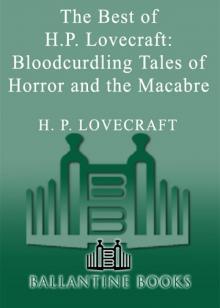 The Best of H.P. Lovecraft
The Best of H.P. Lovecraft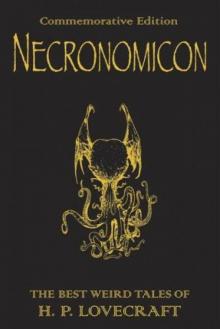 The Definitive H.P. Lovecraft: 67 Tales Of Horror In One Volume
The Definitive H.P. Lovecraft: 67 Tales Of Horror In One Volume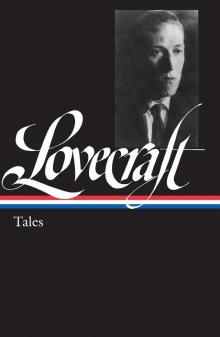 The Complete Works of H.P. Lovecraft
The Complete Works of H.P. Lovecraft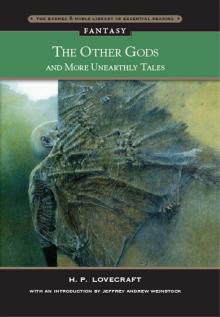 Other Gods and More Unearthly Tales
Other Gods and More Unearthly Tales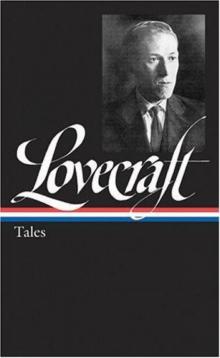 Lovecraft's Fiction Volume I, 1905-1925
Lovecraft's Fiction Volume I, 1905-1925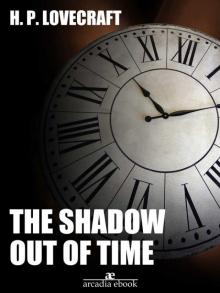 The Shadow Out of Time
The Shadow Out of Time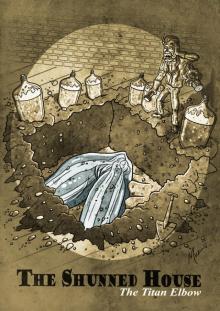 The Shunned House
The Shunned House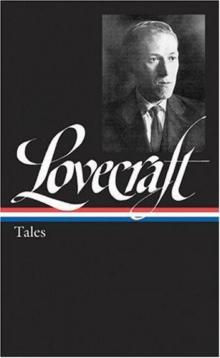 Lovecraft's Fiction Volume II, 1926-1928
Lovecraft's Fiction Volume II, 1926-1928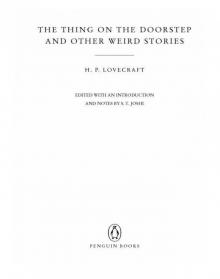 The Thing on the Doorstep and Other Weird Stories
The Thing on the Doorstep and Other Weird Stories Dream Cycle of H. P. Lovecraft: Dreams of Terror and Death
Dream Cycle of H. P. Lovecraft: Dreams of Terror and Death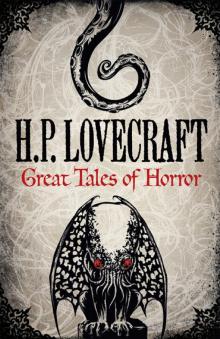 Great Tales of Horror
Great Tales of Horror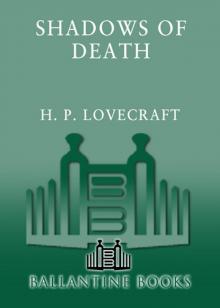 Shadows of Death
Shadows of Death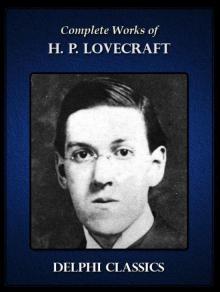 Delphi Complete Works of H. P. Lovecraft (Illustrated)
Delphi Complete Works of H. P. Lovecraft (Illustrated)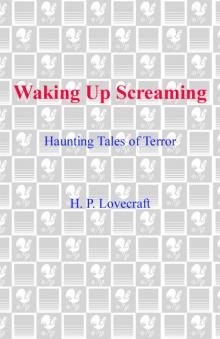 Waking Up Screaming: Haunting Tales of Terror
Waking Up Screaming: Haunting Tales of Terror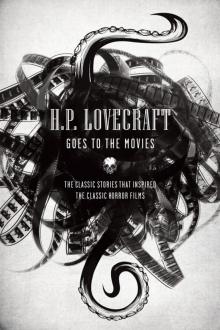 H.P. Lovecraft Goes to the Movies
H.P. Lovecraft Goes to the Movies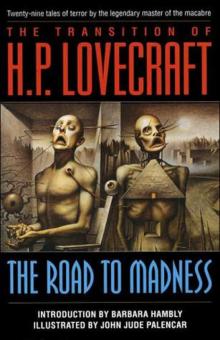 The Road to Madness
The Road to Madness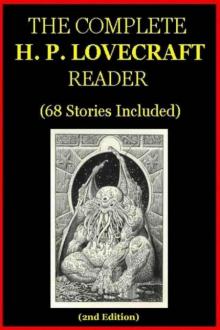 The Complete H.P. Lovecraft Reader (68 Stories)
The Complete H.P. Lovecraft Reader (68 Stories) The Horror in the Museum
The Horror in the Museum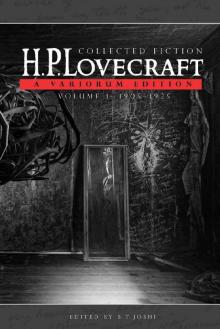 Collected Fiction Volume 1 (1905-1925): A Variorum Edition
Collected Fiction Volume 1 (1905-1925): A Variorum Edition Lovecrafts_Fiction, vol.I_1905-1925
Lovecrafts_Fiction, vol.I_1905-1925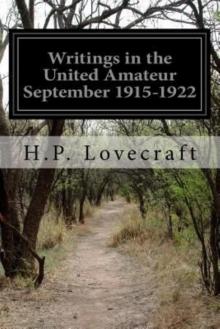 Writings in the United Amateur, 1915-1922
Writings in the United Amateur, 1915-1922 H.P. Lovecraft: The Complete Works
H.P. Lovecraft: The Complete Works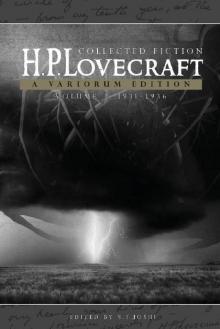 Collected Fiction Volume 3 (1931-1936): A Variorum Edition
Collected Fiction Volume 3 (1931-1936): A Variorum Edition H.P. Lovecraft: The Complete Fiction
H.P. Lovecraft: The Complete Fiction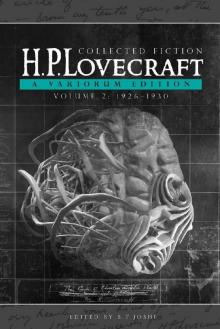 Collected Fiction Volume 2 (1926-1930): A Variorum Edition
Collected Fiction Volume 2 (1926-1930): A Variorum Edition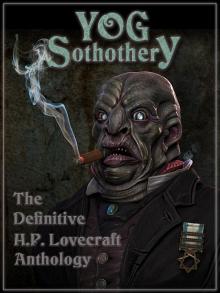 Yog Sothothery - The Definitive H.P. Lovecraft Anthology
Yog Sothothery - The Definitive H.P. Lovecraft Anthology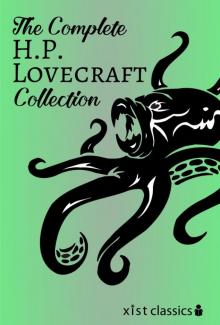 The Complete H.P. Lovecraft Collection (Xist Classics)
The Complete H.P. Lovecraft Collection (Xist Classics)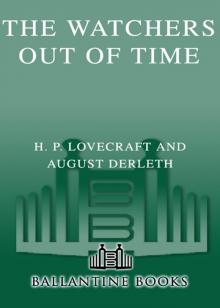 The Watchers Out of Time
The Watchers Out of Time Eldritch Tales
Eldritch Tales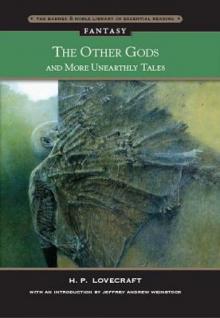 The Other Gods And More Unearthly Tales
The Other Gods And More Unearthly Tales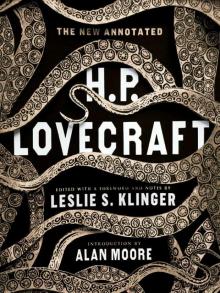 The New Annotated H. P. Lovecraft
The New Annotated H. P. Lovecraft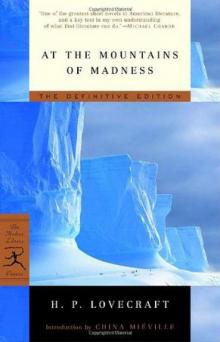 At the mountains of madness
At the mountains of madness Bloodcurdling Tales of Horror and the Macabre
Bloodcurdling Tales of Horror and the Macabre Fossil Lake II: The Refossiling
Fossil Lake II: The Refossiling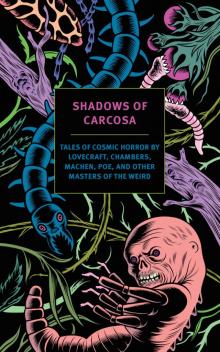 Shadows of Carcosa: Tales of Cosmic Horror by Lovecraft, Chambers, Machen, Poe, and Other Masters of the Weird
Shadows of Carcosa: Tales of Cosmic Horror by Lovecraft, Chambers, Machen, Poe, and Other Masters of the Weird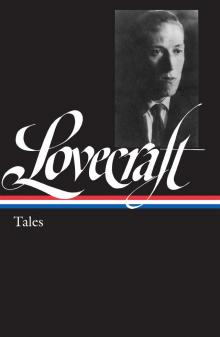 H. P. Lovecraft
H. P. Lovecraft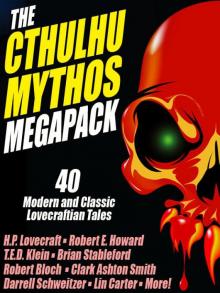 The Cthulhu Mythos Megapack
The Cthulhu Mythos Megapack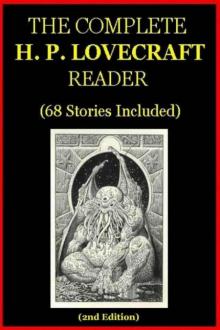 The Complete H. P. Lovecraft Reader (2nd Edition)
The Complete H. P. Lovecraft Reader (2nd Edition) The Complete Fiction
The Complete Fiction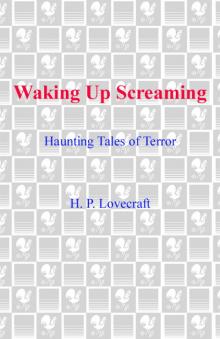 Waking Up Screaming
Waking Up Screaming Transition of H. P. Lovecraft
Transition of H. P. Lovecraft![[1935] The Shadow Out of Time Read online](http://i1.bookreadfree.com/i2/04/12/1935_the_shadow_out_of_time_preview.jpg) [1935] The Shadow Out of Time
[1935] The Shadow Out of Time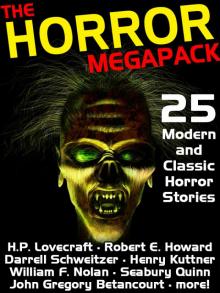 The Horror Megapack
The Horror Megapack